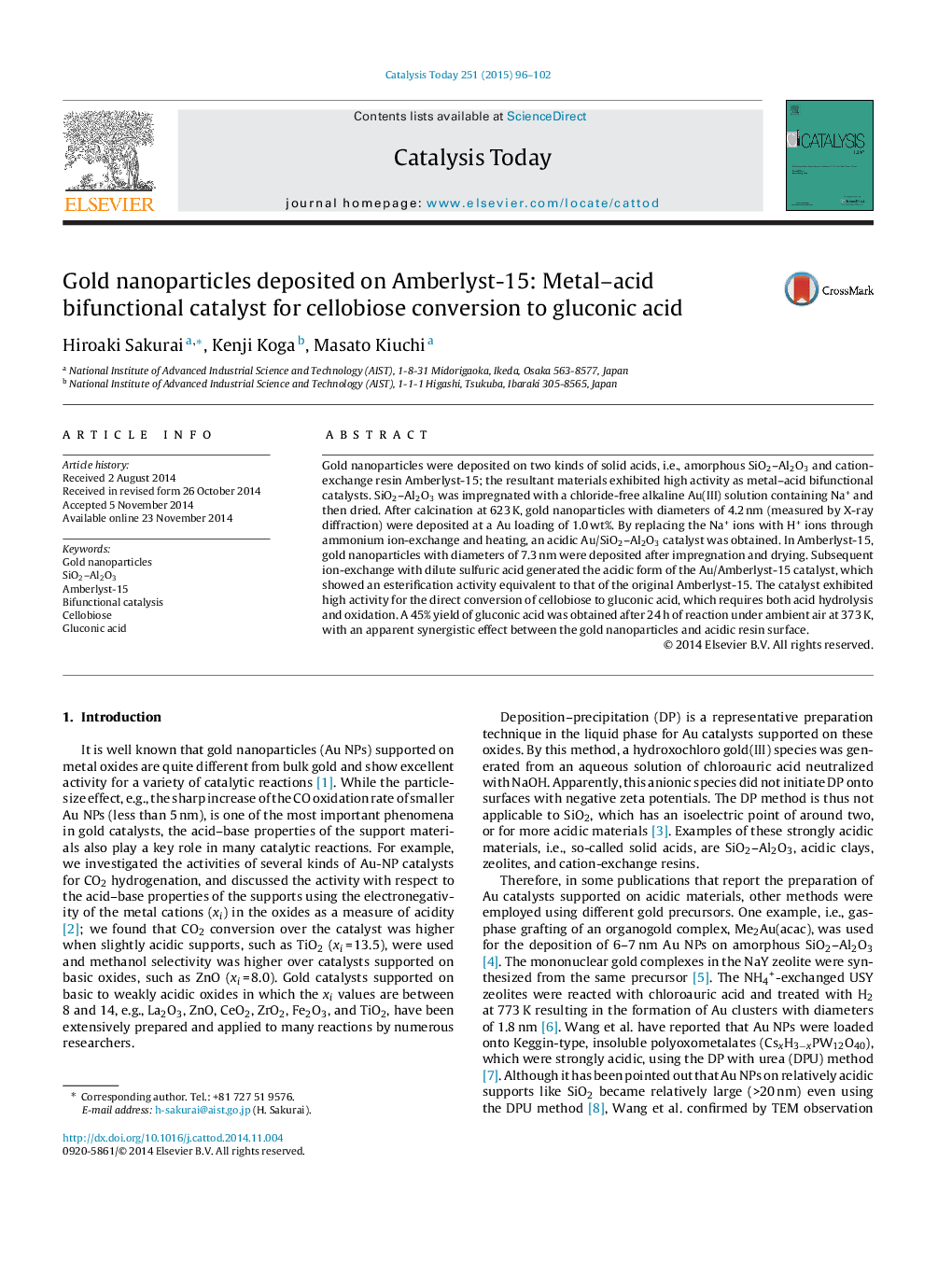| Article ID | Journal | Published Year | Pages | File Type |
|---|---|---|---|---|
| 54097 | Catalysis Today | 2015 | 7 Pages |
•Au solid-acid catalysts were prepared by alkaline impregnation of gold acetate.•Au nanoparticles (<8 nm) were deposited on amorphous SiO2–Al2O3 and Amberlyst-15.•Acidic form of the catalyst was obtained by the proton exchange after Au deposition.•Acidic Au/Amberlyst-15 was efficient for metal–acid bifunctional catalysis.•The catalyst afforded the direct conversion of cellobiose to gluconic acid at 373 K.
Gold nanoparticles were deposited on two kinds of solid acids, i.e., amorphous SiO2–Al2O3 and cation-exchange resin Amberlyst-15; the resultant materials exhibited high activity as metal–acid bifunctional catalysts. SiO2–Al2O3 was impregnated with a chloride-free alkaline Au(III) solution containing Na+ and then dried. After calcination at 623 K, gold nanoparticles with diameters of 4.2 nm (measured by X-ray diffraction) were deposited at a Au loading of 1.0 wt%. By replacing the Na+ ions with H+ ions through ammonium ion-exchange and heating, an acidic Au/SiO2–Al2O3 catalyst was obtained. In Amberlyst-15, gold nanoparticles with diameters of 7.3 nm were deposited after impregnation and drying. Subsequent ion-exchange with dilute sulfuric acid generated the acidic form of the Au/Amberlyst-15 catalyst, which showed an esterification activity equivalent to that of the original Amberlyst-15. The catalyst exhibited high activity for the direct conversion of cellobiose to gluconic acid, which requires both acid hydrolysis and oxidation. A 45% yield of gluconic acid was obtained after 24 h of reaction under ambient air at 373 K, with an apparent synergistic effect between the gold nanoparticles and acidic resin surface.
Graphical abstractFigure optionsDownload full-size imageDownload high-quality image (238 K)Download as PowerPoint slide
